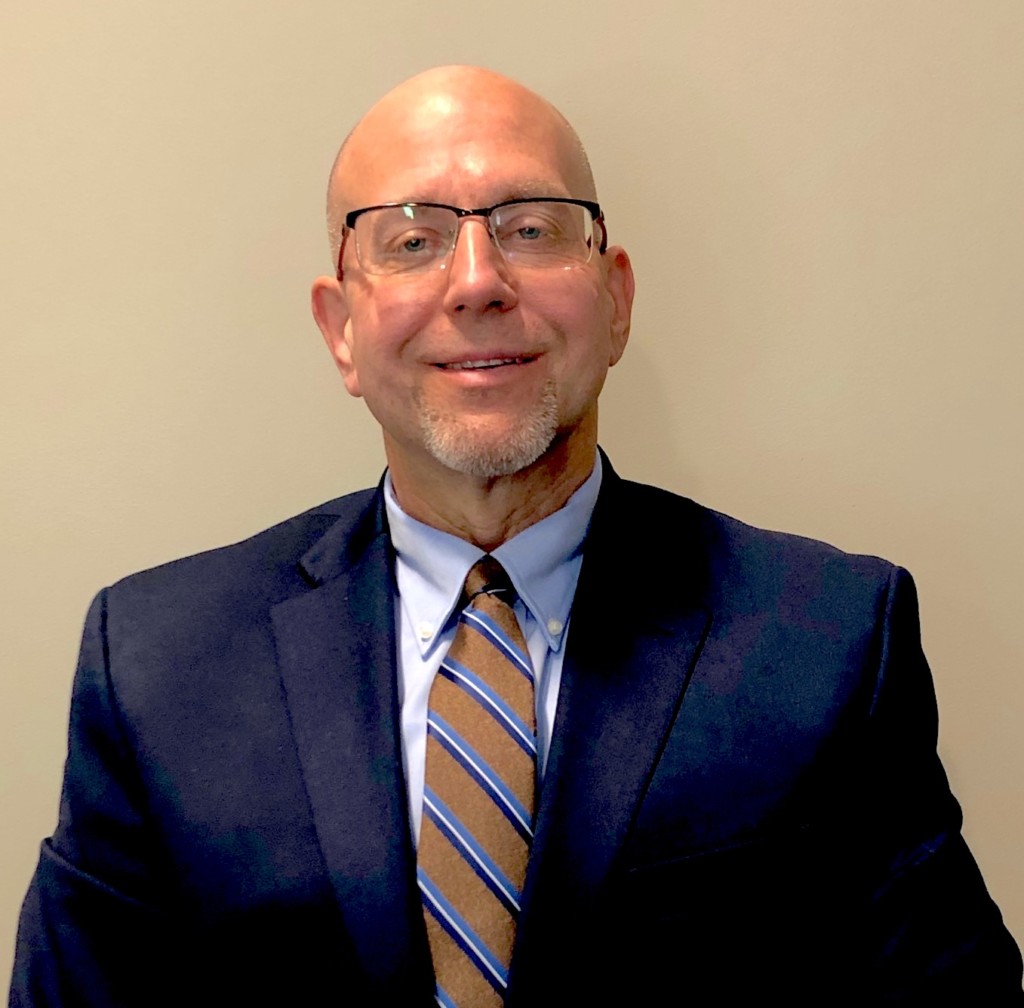A revolutionary patient-centric approach promises—finally—to improve outcomes and reduce costs
By Mark Mravic
Greg Williams was 17 when he entered a residential treatment facility in Pennsylvania for addiction. Almost immediately, the program called his parents and said that the family’s insurance was going to cut their son off. “They were going to kick me out after three days,” says Williams, “and I was going to die.” Williams’ parents did what they needed to keep their son in treatment, even if it meant assuming the entire financial burden of the care.
Six months later, with Greg in recovery, the family petitioned the insurance company for payment—and was rejected. A second appeal, a year later, was also turned down. “You’re sitting in a board room with doctors and nurses hired by the insurance company,” Williams recalls. “I’m a year and a half in recovery at this point, and my dad is looking around this room, like every single person in that room knew they should have covered this treatment. But we still got the rejection notice in the mail.” Connecticut, where the family resided, allowed for a third appeal, this time to an outside party, which finally overturned the ruling and compelled the insurer to pay.
Williams’ experience will sound familiar to almost anyone who has navigated the American healthcare system for a major medical issue. And for those battling substance use disorder (SUD), the frustration, fear and financial worry are often compounded by the fragmented nature of treatment, widely varying standards, lack of coordination and coverage of longer-term care, and a sometimes byzantine, sometimes seemingly arbitrary payment system. More than most other illnesses, in substance abuse treatment the priorities of the players involved—the patients, providers and payers—have not been in alignment. One industry expert described traditional SUD care as “a game of whack-a-mole.”
Now, 20 years on, Williams is part of a movement to revolutionize the way addiction is both treated and paid for. A filmmaker and advocate, and managing partner at Third Horizon Strategies, Williams oversees The Alliance for Addiction Payment Reform, a national collaboration of healthcare stakeholders with the dual aim of improving outcomes and bringing down costs in SUD treatment. The Alliance’s 2018 proposal, called the Addiction Recovery Medical Home-Alternative Payment Model (ARMH-APM), is one of several transformative approaches to addiction treatment that incorporate the principles of value-based care, and that promise in the coming years to change the experience of SUD treatment for providers, payers and—most importantly—patients.
The Theory of Value-based Care
The concept of value-based health care emerged in the mid-2000s with Harvard economist Michael E. Porter, an expert in the field of business strategy and competitiveness. He and colleague Elizabeth Olmsted Teisberg argued that the American healthcare system, based on a fee-for-service model in which providers are paid for specific individual treatments, had evolved to emphasize quantity over quality. The system was fragmented, uncompetitive and expensive, and did not incentivize performance. The result: The U.S. spent far more on healthcare per person than any other country, without the world-beating outcomes to show for it.

Porter proposed to shift from fee-for-service to a model with quality of care and value for patients at its core. Moreover, the system he devised, involving integrating all aspects of a patient’s care and wellbeing, and bundling insurance payments to providers rather than paying a separate fee for each individual service, would be cost-effective. “Value-based health care’s central tenet,” Porter notes on his website, “is that the overarching principle in redesigning healthcare delivery systems must be value for patients. We define value as the outcomes that matter to patients and the costs to achieve those outcomes.”
Among the elements necessary for a truly value-based system, Porter argues, are to organize care around medical conditions; measure outcomes and cost for every patient; align reimbursement with value, through models such as bundled payments that reward both better outcomes and efficiency of care; and develop integrated information technology that can support the system’s major elements.
The goal is to align the priorities of stakeholders, rather than setting them against one another.
Among the stakeholders in a value-based system as spelled out by Porter, the most critical are:
- Patients, who participate in managing personal health and, when faced with care and treatment options, seek assistance in understanding the expected outcomes
- Providers, who stay competitive by adopting a strategic approach, restructuring the delivery of care and measuring costs and outcomes to increase patient value
- Health plans, which maximize value for patients, minimize paperwork and compete for subscribers based on the ability to achieve positive health outcomes
The goal overall is to align the priorities of these stakeholders, rather than setting them against one another.
Given the unsustainable status quo, value-based care has seen widespread uptake over the last 15 years for all manner of conditions, from joint replacement to HIV treatment to cancer care. But behavioral health and SUD have lagged behind. That is changing, driven in part, perhaps surprisingly, by Medicaid and Medicare, where cost pressures are particularly acute (and can’t just be passed on to consumers), and by the growing realization among all providers and payers that the traditional system is flawed.
Value-based Care: The Medical Home Model
There are two essential, interrelated, aspects of value-based models: care and payment. On the care side, the move to value conforms with the growing understanding that addiction is a chronic illness (rather than a moral failing), encompassing a range of factors—physical, mental, social, community. Care for SUD should reflect its complexity and its unique challenges. Whether the patient initially presents at an emergency room, a treatment center or a primary care facility, value-based care should involve a team of providers as the patient moves along the recovery journey, from stabilization through residential care, intensive outpatient (IOP), long-term management and community-based recovery. A care coordinator—sometimes characterized as the “quarterback”—should manage the process, facilitating the patient’s treatment and recovery plan and managing transitions, in coordination with primary care providers, behavioral health specialists, counselors, peer recovery coaches and other supports (pharmacists, social services, etc.).
“There’s a clinical appetite to stay with people, to continue to coach and support them. The largest hurdle is really the fragmented payer space.”
—Greg Williams, Alliance for Addiction Payment Reform
To achieve that ideal type of care—which for many providers involves a radical reorienting of how they treat addiction—one big change is essential. “Every clinician at every facility you would go to in America would love to do long-term care management with the people they’re working on,” says Greg Williams. “There’s a clinical appetite to want to stay with people, to continue to coach and support them—not just within the confines of a residential setting or an IOP, but a much broader care engagement that is relational over the long-term. The largest hurdle is really the fragmented payer space.”

After the 2016 Surgeon General’s report on addiction, which emphasized the integration of physical health, mental health and substance abuse treatment within the healthcare system, Williams and Third Horizon CEO David Smith convened a group of payers, providers and subject matter experts to work toward that goal. The participants agreed that the fee-for-service system wasn’t working, and that whole-person, longitudinal, integrated care that was also flexible enough to be individualized should be the standard for SUD treatment. The obstacle? “Everybody said payment,” Williams notes. “They said, ‘We can’t reorganize the way we deliver care today, or get involved in addiction treatment care—which is a big hurdle in the primary care space or the hospital space—until payment is oriented appropriately.”
The Alliance published the initial ARMH model in 2018 and updated it with a white paper in 2019. It’s not the only value-based care model for addiction, but it illustrates how such a system works.
The ARMH identifies three phases of recovery, or “episodes of care,” with a distinct payment model for each, and recommends payment on a six- to 12-month basis for up to five years:
- Episode Zero: Pre-recovery and stabilization. Care in this phase typically takes place in an emergency room, ICU or primary care setting and is paid on a traditional fee-for-service basis (though the model encourages adapters to consider pay-for-performance incentives).
- Episode One: Recovery initiation and active treatment. The patient is brought into the ARMH, and depending on the severity of the SUD, treatment could range from inpatient care to residential treatment to IOP. In the ARMH, this phase can last up to 12 months. Here is where the payment model diverges from tradition: The payer issues a bundled lump sum to the provider, adjusted for severity. The provider determines how those funds will be spent based on the care plan. At the end of this phase, the provider receives a quality-adjusted payment, typically an agreed-upon percentage of the total base, depending on measures of outcome, and possibly a bonus on top of that, shared between the provider and the payer out of the cost savings.
- Episode Two: Community-based recovery management. This phase, lasting up to five years, focuses on long-term recovery and integration into the community and can involve counseling, social services and peer support—treatment that, as the model says, “sustains the patient in their living, vocational, spiritual and recreational environments.” Providers receive another bundled payment for this phase, reflecting the less-intensive nature of treatment. Importantly, in the event of a disruption in recovery—a relapse involving an expensive ER visit, for instance—payment is not adjusted upward to that of the previous phase. As the ARMH white paper notes, “The Alliance believes this strategy will incentivize coordinated care and thoughtful transitions, and will reduce incentives to steer patients into a higher level of care when clinically unnecessary.”
While all that might sound risky for providers, the model assumes that a well-managed, integrated evidence-based care plan (which takes into account an individual patient’s severity and can also control for other factors) will result in better recovery outcomes and fewer overall medical problems across the patient population. Total cost of care is reduced, and providers and payers benefit by sharing in the savings.
“Everyone’s always scared about the outliers, the person who cycles in and out 17 times, the person who never shows up [for treatment],” says Williams. “Part of the reorientation is that we have to balance the law of averages within value-based care and go after the 80% in the middle, not be paralyzed by the outliers. Protect yourself against the outliers, but win with the 80% in the middle.”
An Insurer’s-Eye View: Anthem and Nuvance
To test the model, Anthem, the nation’s second-largest health insurance company, recently partnered with Nuvance Health, a major provider in Western Connecticut and New York’s Hudson Valley, to pilot the Addiction Recovery Medical Home-Alternative Payment Method.
“Ideally, by having an upfront investment in the patient and recognizing that in the payment structure, we would recoup that in the long term by ratcheting down total cost of care.”
—Eric Bailly, Anthem
“We have definitely adopted the model as something that we’re committed to promoting,” says Eric Bailly, LPC, LADC, a business solutions director at Anthem who oversees SUD strategy. “There are a couple of things that are really important in this model. First and foremost, to make sure that services are being delivered in a way that recognizes the importance of quality, evidence-based care for SUD. There’s a commitment to ensure that an individual is taken care of from soup to nuts, whether it’s physical issues, mental health, co-morbidities, making sure that people get plugged into services that are local when at all possible, and from a continuity of care perspective, that as someone needs more intensive services, it’s easy to throttle back and forth between higher levels of care or lower levels of care.

“This is where the payment component comes in. Fee-for-service tends to reward higher levels of care that are more expensive and that have higher levels of reimbursement. This [ARMH] model really is conscientious that as someone is navigating through the system, from a payment perspective there’s an incentive to make sure sure that person is monitored over the long term.”
Bailly says the Nuvance pilot is helping Anthem develop a model for how pricing works. That includes identifying SUD patients who are candidates for the ARMH, determining their current and prospective patterns of healthcare use compared to members without an SUD, and then figuring out a reasonable price point for episodes of care. “We’re still in the process of developing that sweet spot,” Bailly says. “Our payment innovations team is working on that, whether this going to be more expensive than paying fee-for-service for people to go in and out of the system.”
Both the provider’s treatment plan and the insurer’s payment plan are meant to avoid that vicious cycle of addiction. “Ideally, by having an upfront investment in the patient and recognizing that in the payment structure, we would recoup that over the long term by ratcheting down total cost of care,” Bailly says. “Because when someone is stable in their SUD and they’re being treated appropriately, we’re not going to see the ER visits, the urgent care visits, as people could spin out of control. And readmissions tend to be very, very expensive. Not to mention the other aspects, including the penetration of cost into the system—missing work and those kinds of factors. But from an insurance perspective, on the backend we would see that recuperation in the reduction in total cost of care for that population.”
One of the intriguing aspects of the model—and where the payers and providers might see the most financial benefit—is how it incorporates risk. “Reaching a sweet spot for price points for episodes of care is step one—that’s math,” says Bailly. “Then value-based reimbursement and outcomes-based measures, and developing upside and downside risk—that’s like phases two and three. Phase two might be, Let’s set up an upside-risk only deal, where we’re going to work with Nuvance and if you hit x, y and z targets, you get a bonus. If you miss them, you get your normal payment. But if you want to have upside and downside risk, organizations over time will be incented to approach both. And if there is a downside risk, basically what the organization is saying is that we feel so strongly that we can hit these targets that we’re willing to take a hit if we don’t. That’s going to develop over time. The proof of concept is where this is all going to start.”
As with everything else in healthcare, COVID slowed the momentum of Anthem’s ARMH pilot rollout, but more are in the pipeline, and other insurers—such as AmeriHealthCaritas in D.C.—are testing the model. “So we’re having a bit of a show of solidarity with some others,” Bailly says, “to really put our thought muscle behind this.”
The Caron Experience
While fully built-out models like the ARMH initially may be best-suited for large-scale hospital systems and accountable care organizations (ACOs), a number of addiction treatment providers have brought value-based features into their practices.
In 2001, Caron Treatment Centers, based in Eastern Pennsylvania, decided to stop taking insurance. The company, considered one of the gold standards in addiction treatment, felt that insurers’ managed-care guidelines took too much of the treatment plan out of its clinicians’ hands. And under managed-care protocols, patients relapsed at a higher rate. But the 2010 Affordable Care Act (ACA) and other initiatives drove a change in how insurers handled behavioral health and substance use. In 2017 Caron negotiated an innovative contract with Philadelphia’s Independence Blue Cross (IBC): IBC would provide a single bundled payment upfront—and then essentially get out of the way, allowing Caron the time and flexibility to develop an integrated treatment plan for each patient, including a standard 28-day residency, and revise it as necessary without having to repeatedly check in with the insurer over coverage. That approach, says former chief medical officer Joseph Garbely, MD, allowed Caron “to focus on the outcomes—how people do—rather than fight every seven days for another seven days.”
“When we sat down with [Independence Blue Cross], we knew we had to take some risk. We bet on ourselves.”
—Joseph Garbely, Caron Treatment Centers
The arrangement, though, also meant that if a patient relapsed within 90 days after discharge, IBC wouldn’t have to pay. The costs would fall on Caron. “When we sat down with [IBC], we knew we had to take some risk,” says Garbely. “We bet on ourselves.”

It paid off. For its 71 IBC patients treated in 2019, Caron’s 90-day readmission rate was 5.6%—less than half that for patients in six other providers in IBC’s network. And Garbely says the one-year number for relapse in need of readmission was 20%, about half the industrywide figure.
That opened eyes, especially when he and his team presented their findings at the 2021 Rx Summit. Caron has now signed similar contracts with Highmark Blue Cross Blue Shield, which brought in most of the “Blues” in America, as well as Aetna and various regional insurers. And, nicely, it has opened up wider access to Caron’s treatment, which many out-of-pocket payers would have found prohibitive. Garbely says 75% of Caron’s patients now come through insurance, and the average daily census at its Pennsylvania campus has risen from around 100 into the 140s at times.
“Upping the quality of care and holding treatment centers accountable for their outcomes over a longitudinal period of time is a long time coming,” Garbely says. “And I think it’s going to improve what we do as a group. We really need a paradigm shift.”
Challenges for Value-based Addiction Care
As value-based care evolves and gains buy-in, challenges will present themselves. Perhaps most prominent of those, outside of institutional inertia, is how to measure positive outcomes in a way that will inform payment models and gauge provider performance. Long-term SUD outcomes—often dependent on self-reporting—have been notoriously lacking in robust, quantifiable data. Even where data is collected, differences in technology platforms and the ability to share information among providers and insurers means that infrastructure must evolve.
While those outcome measures are refined, judging a provider’s performance can be based on process measures such as use of evidence-based medicine, screening for underlying behavioral issues and whether a patient is engaging with a primary care physician, therapy or peer coaching. Even systems factors such as adopting technology platforms, training staff and building out telemedicine capacity can contribute to the measurement of quality.
Williams believes there’s plenty there to get the ball rolling. “I’m all for recovery capital indexes; I believe deeply in that stuff in terms of quality of life,” Williams says. “That’s where most clinicians will kind of hate me for what I say next, which in that as a pragmatist, the HEDIS [Health Effectiveness Data and Information Set] measures aren’t too bad. The follow-up from the ER visit and 30-day hospitalization and getting people on MAT—there are three or four HEDIS measures that aren’t the worst things in the world. If we started doing those better, we’d be pretty far advanced. The payers understand that, and they’re out in the marketplace. So while we have a ton of work to do on quality measures, it’s not a reason not to do this work.”
Another challenge involves new demands on providers’ expertise and time. A 2020 study in Substance Abuse: Treatment and Research surveyed SUD treatment providers in New York as the state adopted value-based contracts for its public health programs. The survey found that providers were adapting to the model with increased training and support for staff, and by developing business models to add services, expand partnerships and build out reporting and data capacity. But those changes have been demanding, and the survey found that concerns over workforce, infrastructure and financial issues, and managing relationships with existing and new partners, have left some administrators overwhelmed.
“It’s been a big shift, talking about engagement, picking up the phone and saying, ‘Hey, where are you? You missed your appointment—let’s get you in here as soon as possible.’”
—Survey respondent, on providers’ experiences of value-based addiction care
Even something as straightforward—and essential to the value-based model—as patient follow-up can require new ways of thinking for some staffers on the ground. One respondent in the survey noted that the model calls for staffers to be more diligent when, for instance, a patient fails to show up for a treatment: “For a lot of our clinicians, we’re trying to train them. In their minds, it’s ‘[The patients] need to take accountability for their addiction, and they need to do this. We’re enabling them.’ So it’s been a big shift, talking about engagement, picking up the phone and saying, ‘Hey where are you? You missed your appointment—let’s get you in here as soon as possible.’”
The study concluded that “as alternative payment models are being adopted in the United States and internationally, states, MCOs, and healthcare systems should identify ways to mitigate challenges and support SUD treatment providers that may have limited resources to address complex workforce, client, and infrastructure needs.”
The Future Is Patient-centered
Such challenges, proponents argue, are part of the transformation process and shouldn’t be viewed as red lights. Williams notes that it will take years, decades even, for value-based models to evolve. “There are a million reasons why this won’t work,” he says. “There are a million reasons why our field will never get there. We’re here to say each one of these barriers, each one of these walls, can get knocked over. And quite frankly, they have to get knocked over. You can’t sustain a chronic disease illness treatment in the modality that we’re paying for it. It doesn’t work.
“It’s a matter of doing what we can today, knowing that there’s plenty of deficiencies in the marketplace around operationalizing this stuff. And I believe that total cost of care is the opportunity right before us. If you put the providers on the hook for total cost of care, other quality-of-life stuff is going to become a byproduct. If all of a sudden my incentive is keeping people out of the hospital, keeping people out of the ER, keeping people managed in an outpatient, community-based setting and primary care, watch criminal justice rates fall, watch unhoused populations fall—all of these issues that are intractable in our field. So I think starting with total cost of care and shared savings, we can reorient our clinical systems to get their arms around those things in a bigger way.”
That reorientation toward a value-based approach has patients at its heart. “They feel like they have time for us to figure out what else might be going on, and treat that in a parallel process,” says Caron’s Garbely. “And they feel comfortable—they can settle in. They’re not waiting for that seven-day call, because sometimes it’s, ‘Pack your bags.’ And they’re not ready.”
“What’s different for the patient in this scenario,” adds Bailly, “is that they have an entity that’s taking ownership over their condition. Let’s say that, God forbid, I get diagnosed with cancer. I’m in Fargo-Moorhead [N.D.], and there’s a great cancer center at Sanford [Medical Center]. They’ve got evidence-based care pathways—if I’ve got colon cancer, I go this pathway, if I’ve got another cancer, I go a different pathway. It’s very clear. I feel like I’ve been hugged by the system.
“If you go in someplace with an SUD, you’re getting pushed out the door, because they don’t want to deal with you. So with this model, you’re getting that proverbial hug of, ‘Come on, we’re going to figure this out together. Here are the pathways, here are the entities, this is what we’re going to do. Here’s the plan.’”
A hug that’s covered by insurance? Now that’s a paradigm shift.













